Learn how to make fresh paneer at home with only a few simple ingredients. This easy homemade paneer recipe creates the softest, most tender paneer cheese from scratch – with no preservatives or special additives needed.
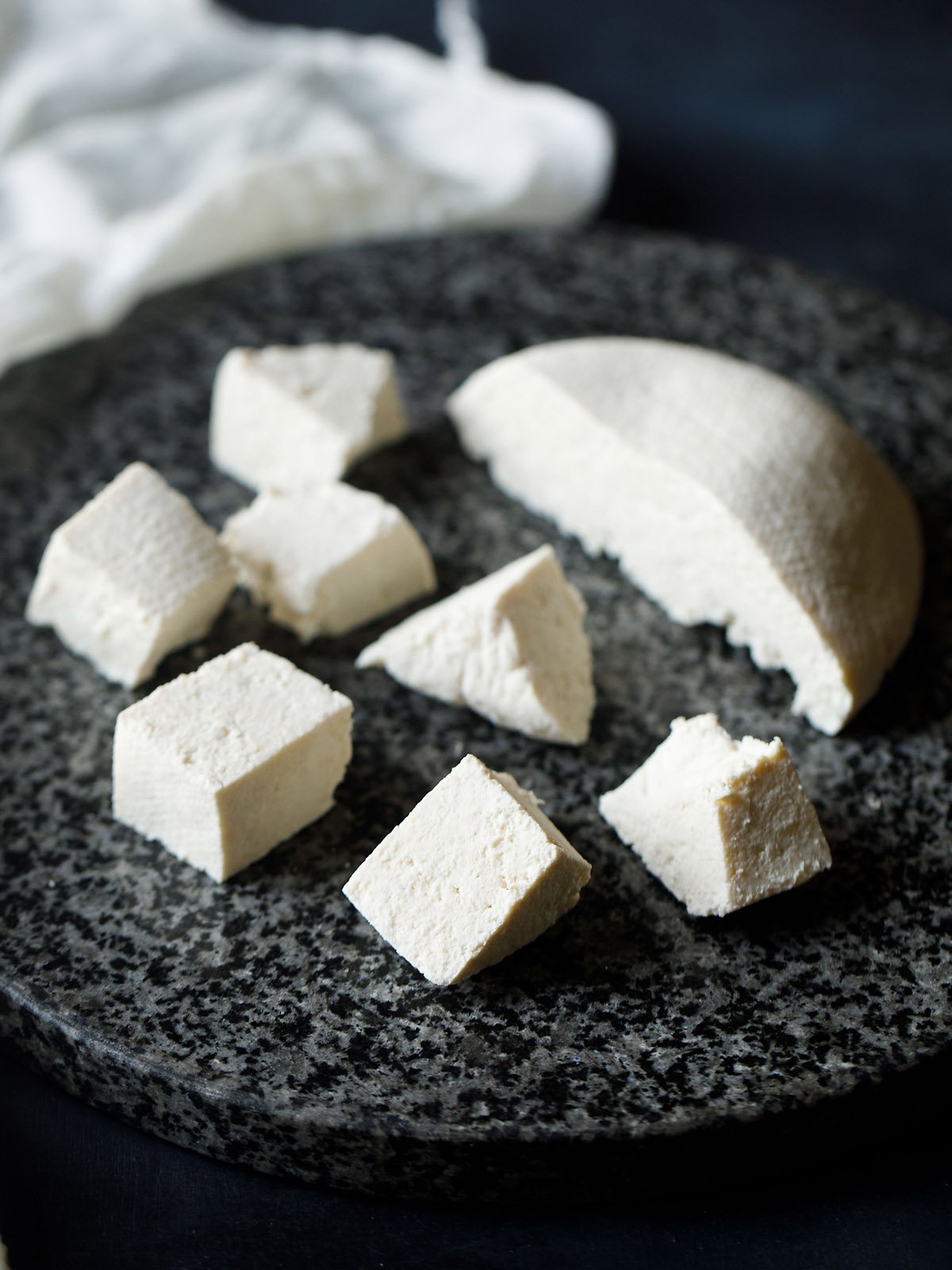
I have been making paneer from scratch for many years, and cannot remember the last time I bought it in a store. Not only is homemade paneer more wholesome and fresh, it is actually cheaper to make than it is to buy.
With just a few key steps and tips you too can make the best tasty paneer in your own kitchen!
What is Paneer?
Also known as Indian cottage cheese, paneer is a fresh cheese made by adding a food-based acid to curdled milk. The resulting whey is strained and pressed in muslin cheesecloth, creating a firm block of delicious cheese.
Paneer does not require any fermenting or curing. And unlike many other kinds of cheese in the world, the making of paneer does not involve Rennet, and it is therefore completely vegetarian-friendly.
It is a firm, non-melting cheese that is unsalted, and has a pleasantly mild flavor. Paneer cheese is made in a similar way ricotta cheese is made.
Blocks of homemade paneer can be used to make a variety of tasty dishes, from pakora to curries – and is super yummy to eat by the slice on its own!
About Homemade Paneer
I learned how to make paneer decades back in my cooking school. It is a simple process that involves first boiling milk and curdling with a food acid, then pressing to form a firm cheese.
The curdled milk is strained and pressed in cheesecloth, and the whey is either discarded or reserved for later use.
After just 30 minutes you have a beautiful homemade block of fresh homemade paneer that’s ready to keep in the fridge or use in your favorite dishes.
5 food acids that curdle milk
- Lemon juice or lime juice: Adding lemon juice gives a soft and firm texture to your homemade paneer. For a litre of milk you could add about 2 to 4 teaspoons of lemon juice depending on the quality of milk.
- Vinegar: A firm and soft texture is also achieved by adding vinegar. Add about 2 to 3 teaspoons of white vinegar or apple cider vinegar in 1 litre milk. With vinegar the milk curdles faster and quicker.
- Curd or yogurt: Fresh curd will give you more softer and moist paneer. You could add about 3 to 4 tablespoons of fresh curd or yogurt when making paneer recipe with 1 litre milk.
- Buttermilk: Using buttermilk also yields a soft as well as firm paneer cheese. Try adding 4 to 5 tablespoons of buttermilk in a litre of milk.
- Citric acid: I do not use citric acid as it create too firm of a cheese. But you can try it in combination with lemon juice or vinegar.
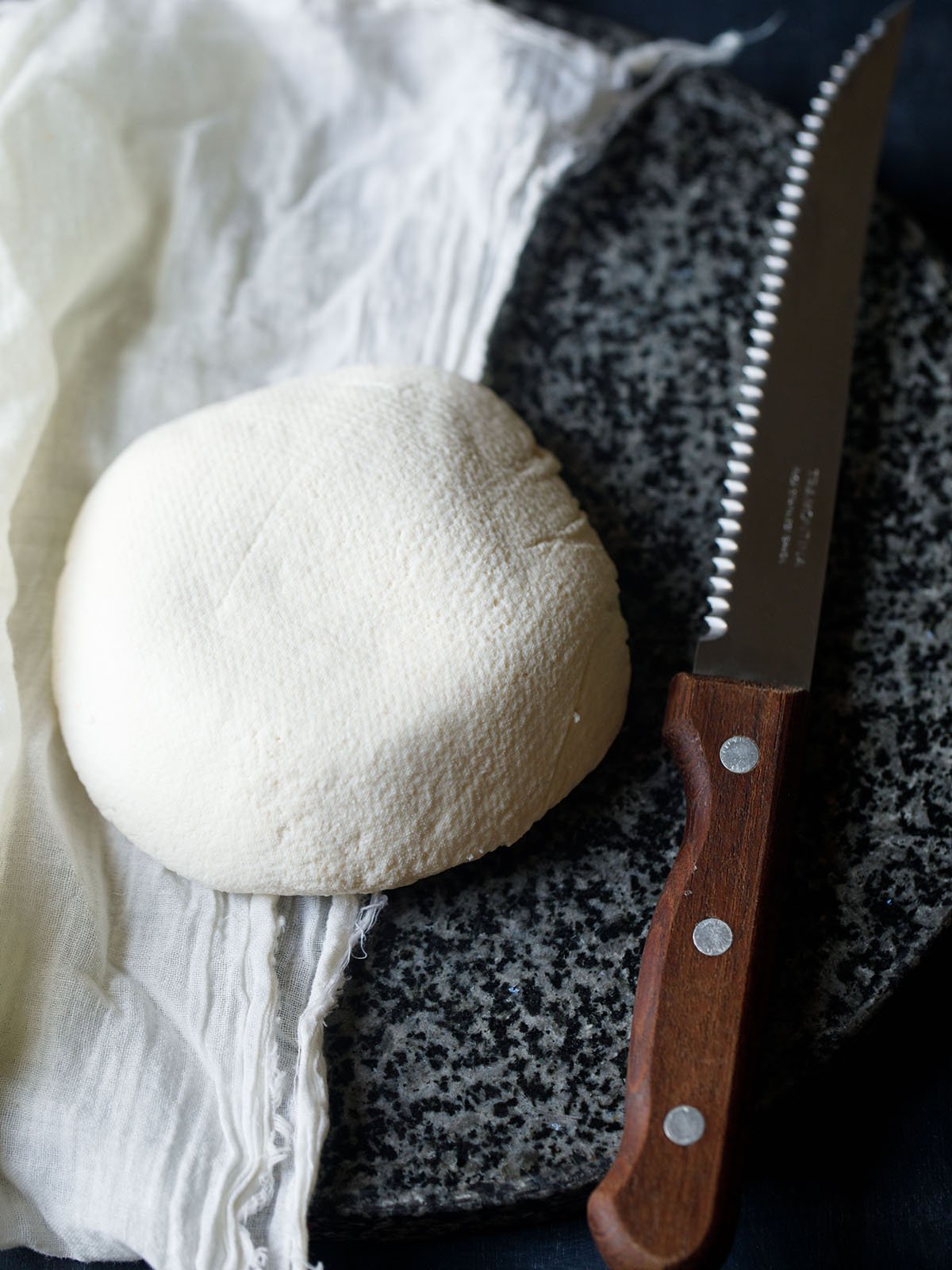
How to Make Paneer
Boiling the Milk
1. First, rinse a large, heavy duty pot with water to ensure that it is completely clean. Add 1 litre (approximately 4 cups) of milk to the pot.
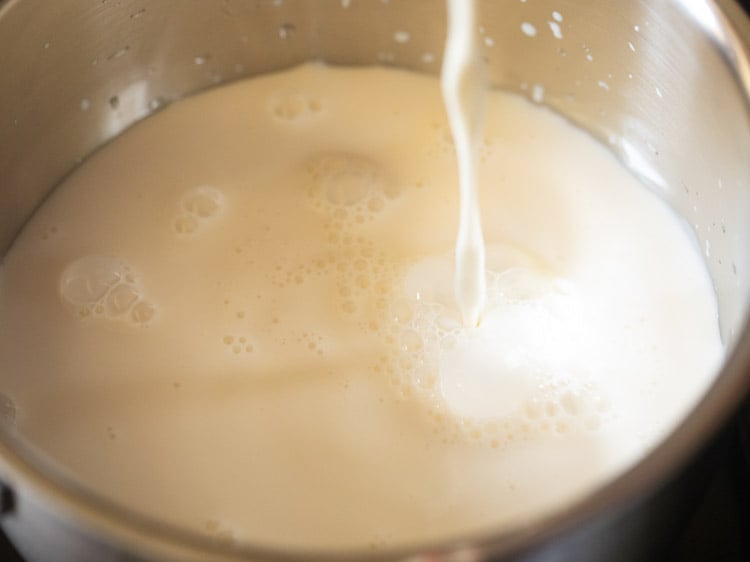
2. Then begin to heat the milk on a medium-low flame.
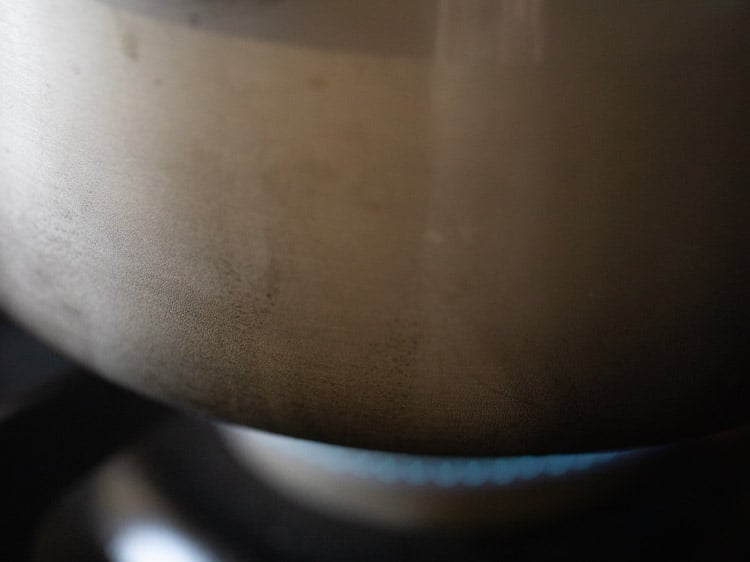
3. As the milk heats, stir occasionally so that a skin does not form on the surface and the milk does not burn on the bottom of the pot.
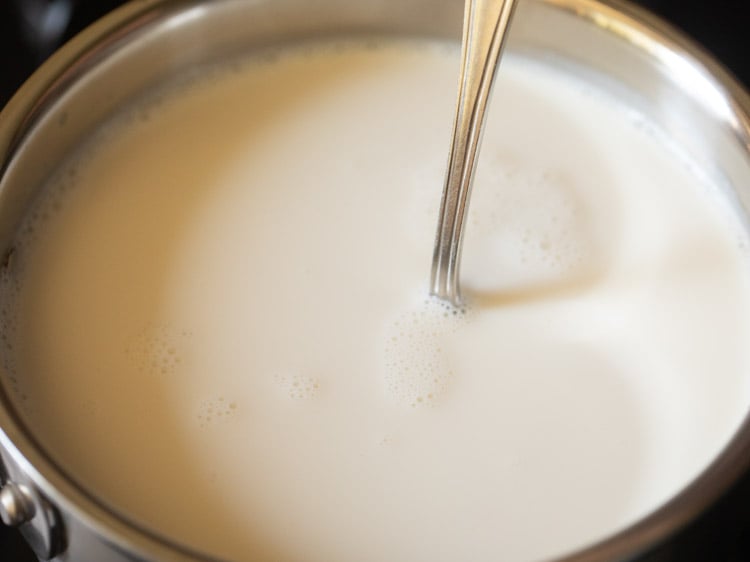
4. Meanwhile, prep your workspace: Place a metal strainer or sieve over another large sauce pot. Then line the strainer with clean muslin or cheesecloth, or a cotton napkin.
You can line the pan directly with the muslin, but using a strainer is very helpful for avoiding messes.
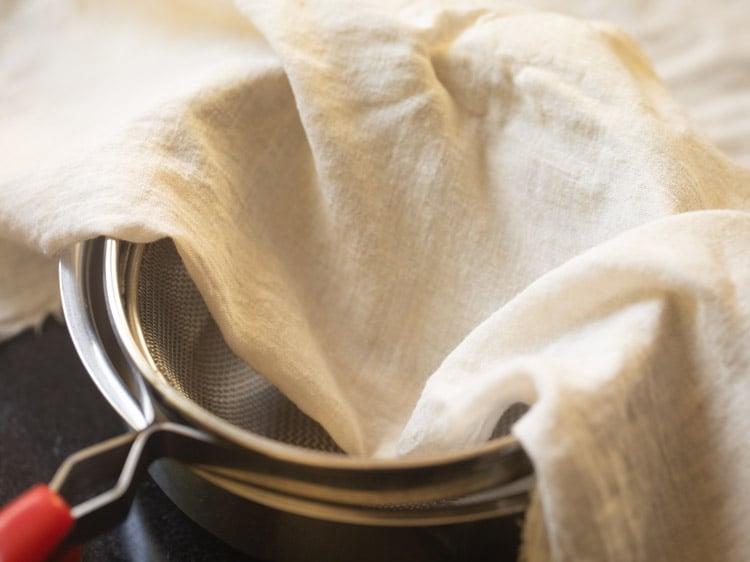
5. Let the milk come to a boil, until it starts foaming and rising.
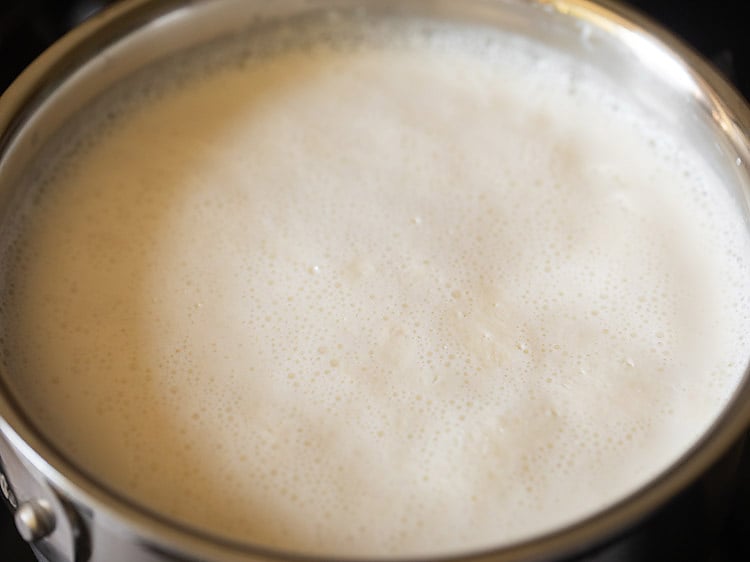
Adding Food Acid
6. Now it’s time to add the one food acid of your choice:
- Lemon juice – 2 to 4 teaspoons
- Vinegar – 2 to 3 teaspoons
- Buttermilk – 4 to 5 tablespoons
- Curd – at least 3 to 4 tablespoons
The amount of acid needed will depend on the quality of milk used. More fat in the milk will require more food acid to make this paneer recipe.
For this batch of paneer I am using lemon juice as the acid. It’s my favorite for its mild flavor and freshest tasting cheese.
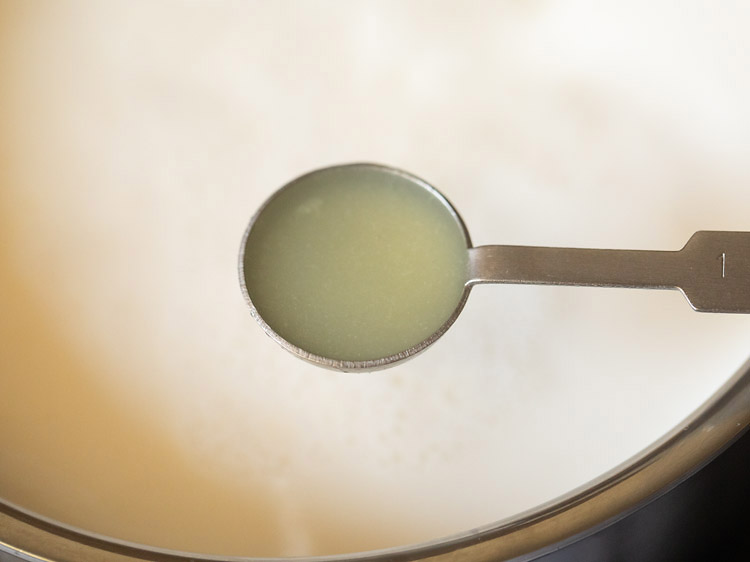
7. Stir in the lemon juice (or acid of choice). The milk will begin to curdle immediately.
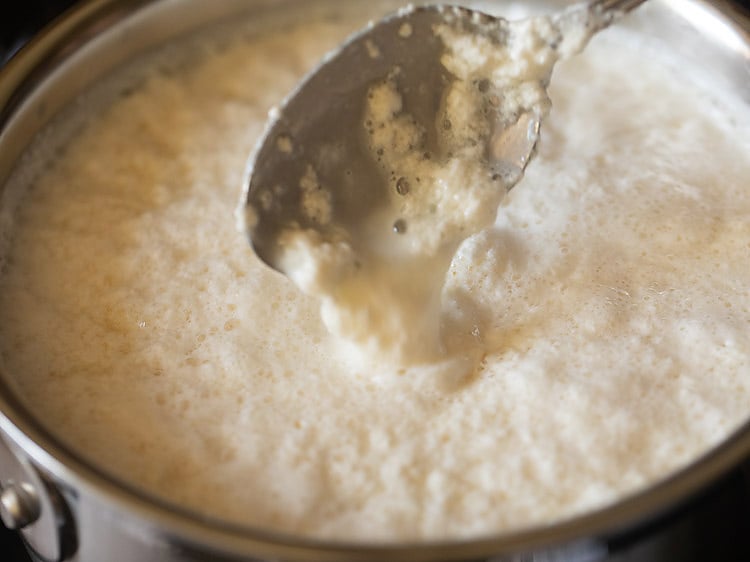
8. The milk must curdle completely before you can make paneer. Continue to stir the milk to help keep it from sticking to the pot.
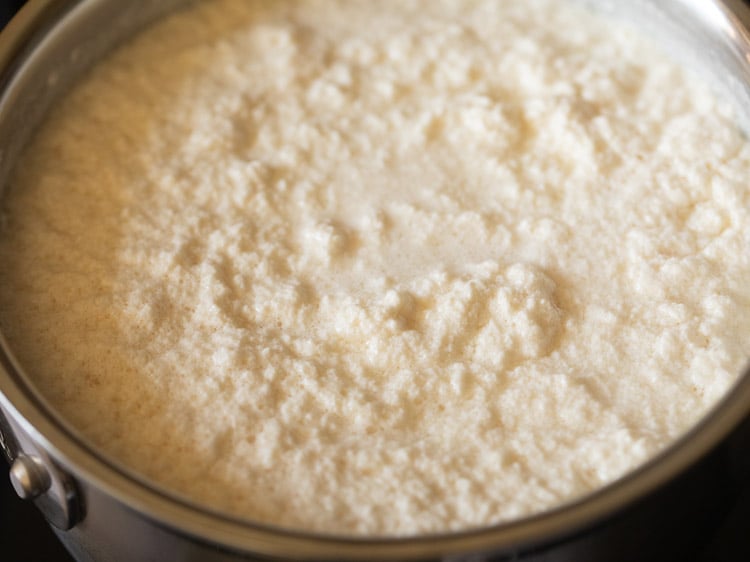
9. Add 1 to 2 teaspoons more of the food acid if it doesn’t seem to be curdling fully.
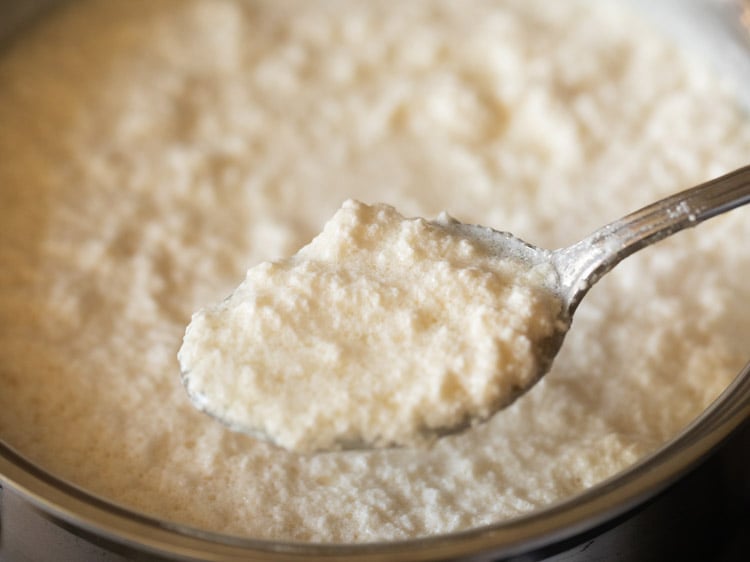
Making Homemade Paneer
10. After the milk has fully curdled completely and you see a greenish whey, switch off the heat. Then immediately pour the mixture into the lined strainer.
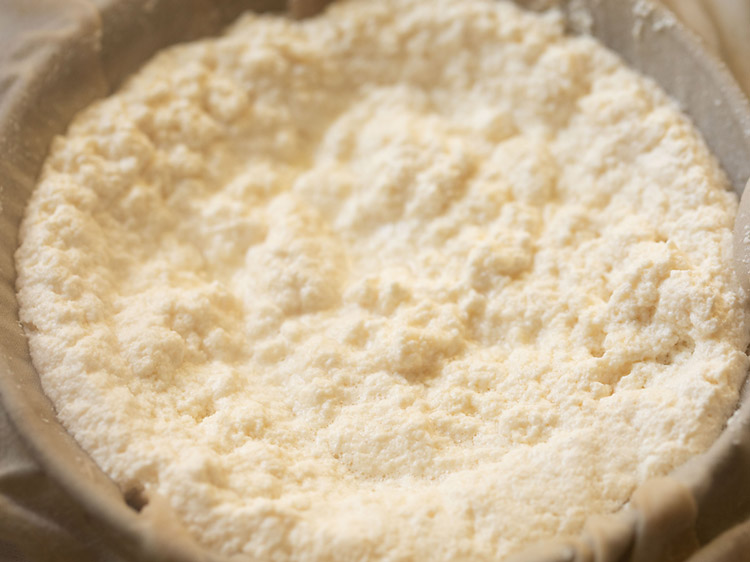
11. Next, gather the edges of the cheesecloth – be careful, the coagulated milk mixture will be very hot. Lift the bundle and allow to drain until no longer dripping.
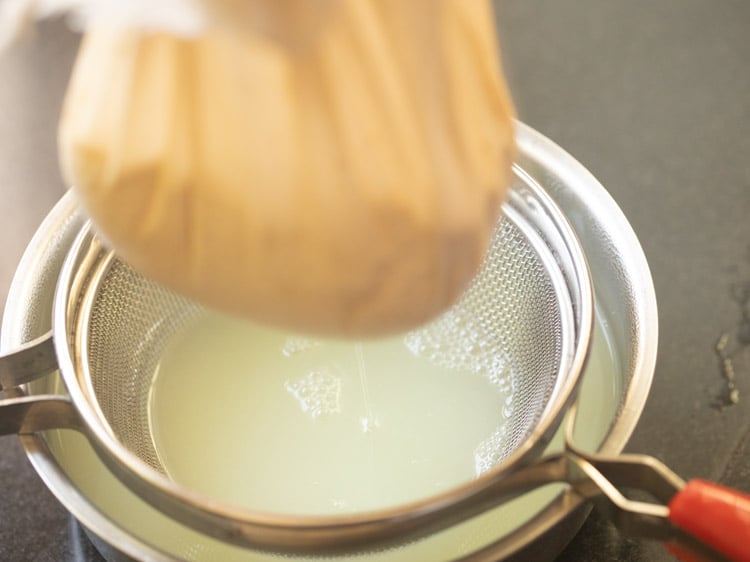
12. With the ends tightly gathered, run clean, fresh water all over the cloth to rinse. This ensures that the lemon or vinegar flavors are also rinsed with the water. If you have used curd or buttermilk, then you do not need to follow this step.
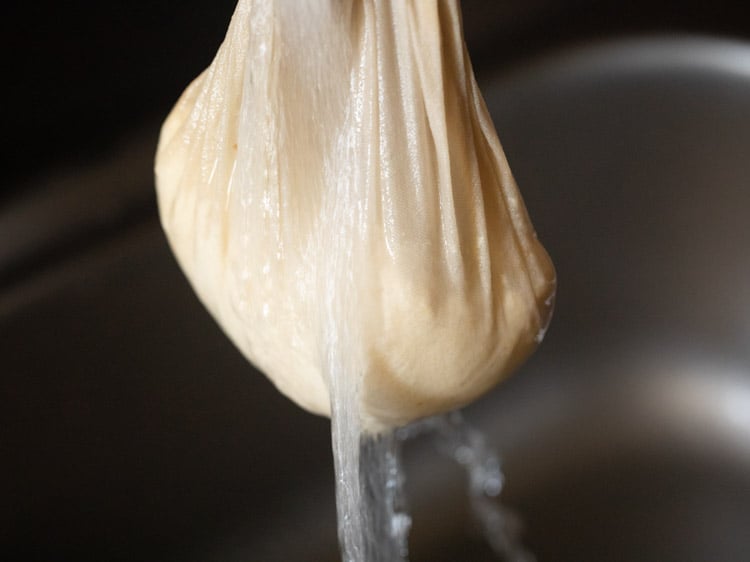
13. Tightly secure the ends of the cloth to keep the chenna wrapped, then place the bundle back in the strainer on a plate or over a clean bowl.
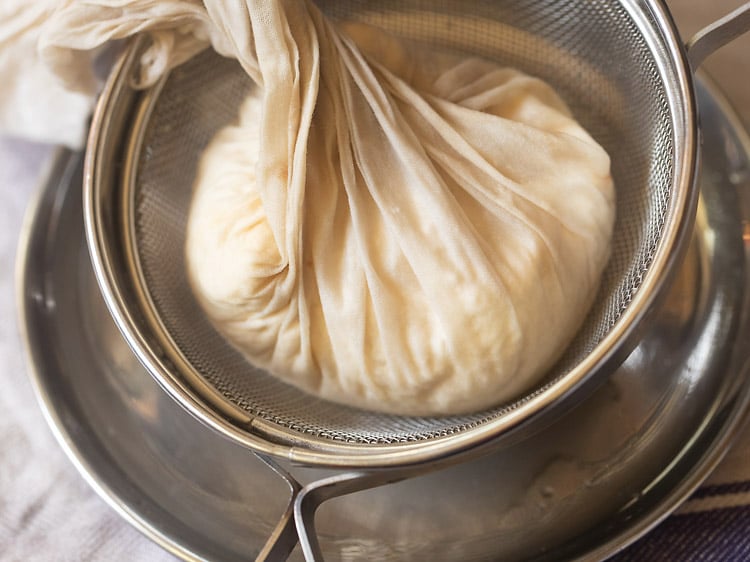
14. You can either hang the bundle (on your kitchen basin faucet) or press to form the cheese. Hanging the bundle will require about an hour, and should be done over a bowl or in your kitchen sink. This method tends to produce a softer, more loose texture.
I prefer to make a firmer paneer cheese by pressing the whey out with an object that weighs at least 500-600 grams (or at least 1 pound). This method only requires 30 to 40 minutes and can be done in the strainer over a pan or bowl.
In the picture below I’ve used the mortar from my mortar and pestle set. You could even stack up with some plates.
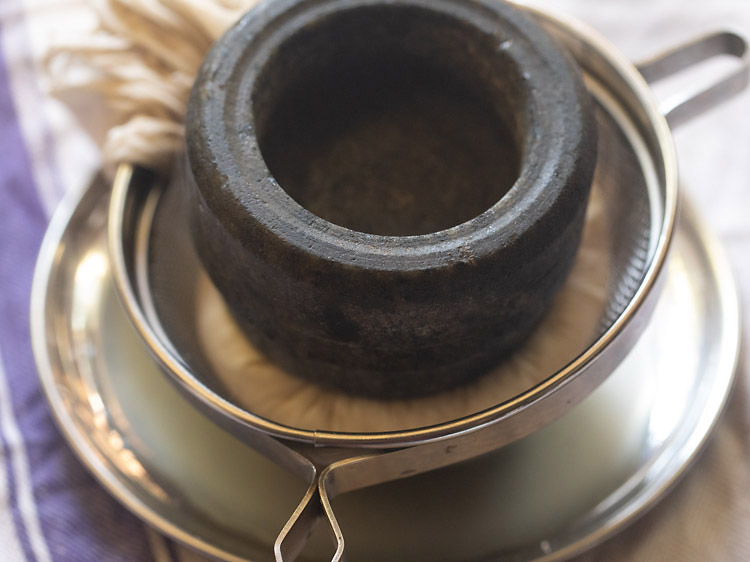
15. After 30 to 40 minutes of pressing the paneer is ready. The longer it sits with the weight the firmer your cheese will be. So for a softer cheese be sure to take off the weight sooner rather than later.
Remove the weight and open the cloth. I used one litre (4 cups) of milk and therefore made roughly 200 grams, or 7 ounces, of homemade paneer.
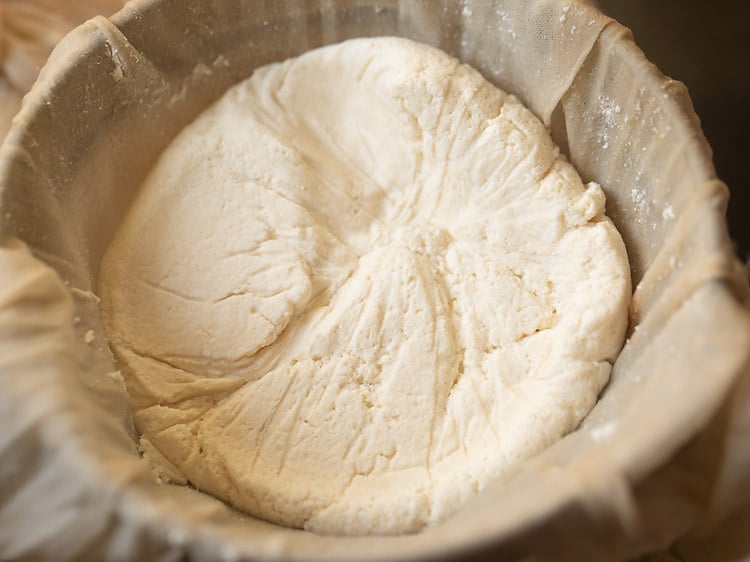
16. You now have a beautiful block of smooth and tender paneer cheese.
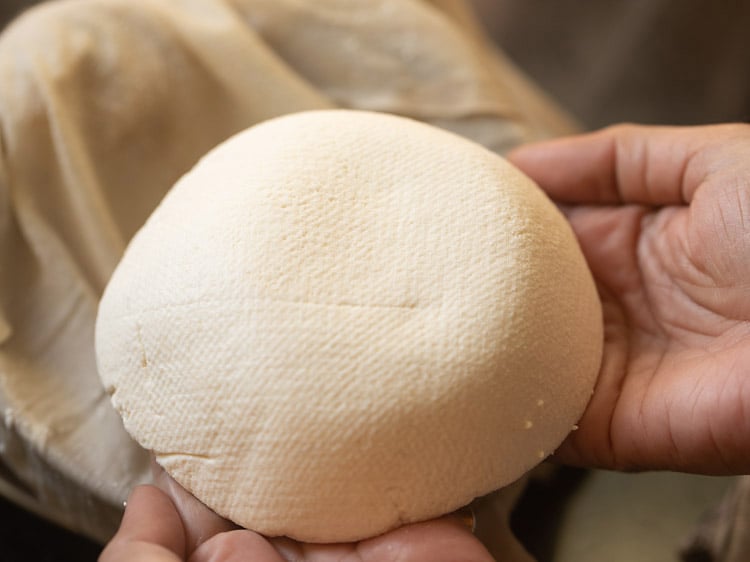
Storing and Using Paneer
17. Use the paneer right away to cook, or you can refrigerate it for later. To refrigerate, keep stored in an airtight container for 2 to 3 days.
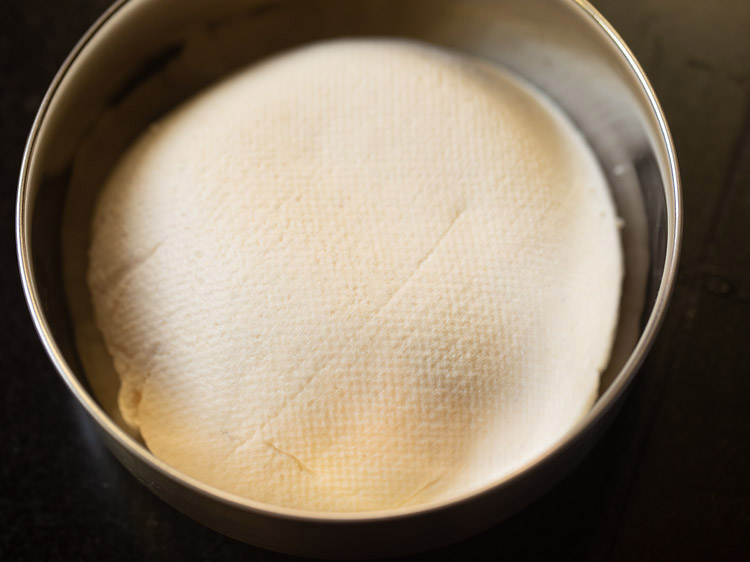
18. The collected whey can be added to roti, rice or vegetable dishes. Keep reading for some great ideas of what to do with the whey!
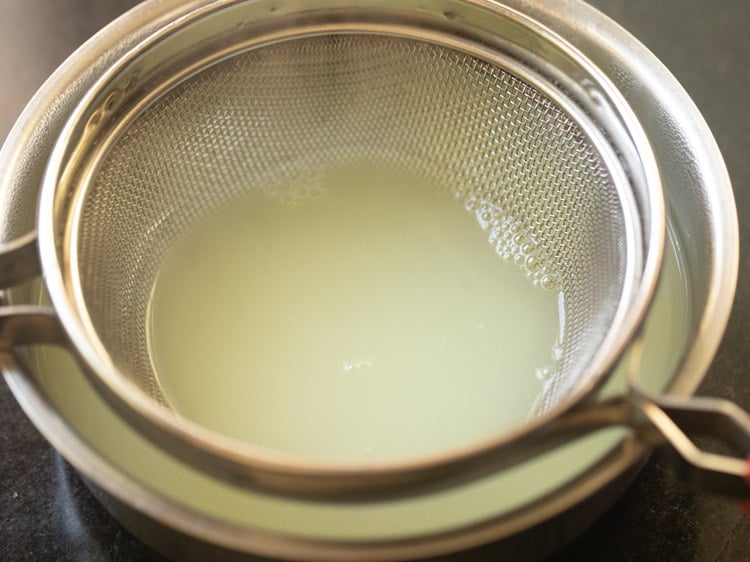
19. When ready to use the paneer, slice it thin or chop into chunks – whatever your recipe calls for. Try your fresh homemade paneer to make your favorite Indian curries or you can check my category of Paneer Recipes for more ideas.
You could also make Kadai Paneer, Palak Paneer, Paneer Butter Masala, Paneer Tikka, or any number of delicious recipes.
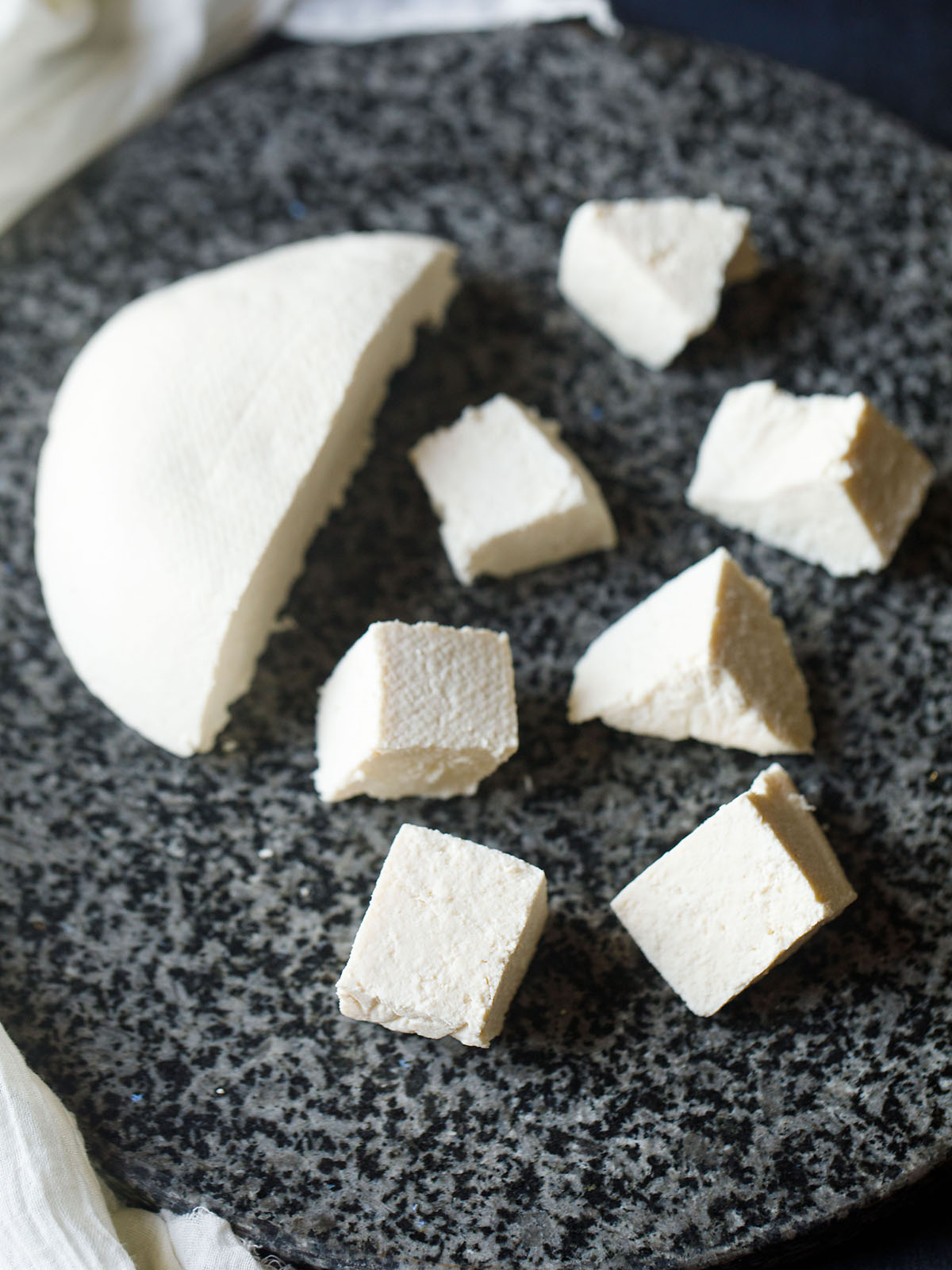
What to do with Leftover Whey
After pressing or hanging the paneer, you’ll have a greenish colored whey which is very rich in nutrients. You can discard this liquid, but I highly recommend you keep and use it for adding a healthy boost to a number of recipes. Easily refrigerate the whey for up to 5 days in an airtight container.
However, it should be noted that there will be a hint of flavor in the whey from whatever food acid agent is used. For example, if lemon juice has been used to curdle milk, there will be a bit of sourness in the whey and therefore any dish made with it.
Here are just a few ways to use the whey from the paneer-making process:
- Add nutrient-rich whey into the dough of breads like chapati, paratha, or any baked loaf of bread!
- Mix it into cake batters or cookie doughs.
- Include the whey in dals such as Dal Fry or Dal Tadka.
- Even Pulao and Biryani taste good with the whey added! If using to make veg biryani, add the whey in the vegetable gravy instead of water.
- Whey can be added raw into fruit smoothies, juices and even soups.
- It can also be added in any gravy or curry as a substitute for water.
- You can even make pasta based dishes with the whey!
- Because it is so rich in nutrients, you can even use it to nourish houseplants or garden plants! Simply cool and mix with water before watering your plants.
Expert Tips
Want to make sure your paneer is perfect every time? Be sure to follow my tips:
- Milk: For the tastiest paneer I recommend using full fat whole milk. Pasteurized or unpasteurized is fine, but it should be high quality for the best results. Do not use toned or skimmed milk for making paneer. Without lots of fat the paneer cheese will come out far too hard. Always use fresh milk that is not expired.
- Food acid: You can use any one of the four ingredients that coagulate the milk as mentioned above, but remember: each of these will add a hint of flavor to the paneer. Therefore use buttermilk or curd to make paneer with the most mild flavor.
- Cream: There is no need to remove any cream that you might see floating in the milk as it cooks. In fact, the natural cream present in the milk is what makes the paneer soft. Additionally you could add 2 to 3 tablespoons heavy cream in the milk before heating which will make for a more softer paneer.
- Simmering: Do not continue to boil the milk once it curdles completely. Immediately remove it from the heat and strain the milk. Otherwise, overcooking will yield an unpleasantly hard, crumbly cheese.
- Storing: Keep the paneer soft in the fridge by placing in a bowl and soaking the paneer block in water. If the paneer does become hard you can soak the block in warm water for a minute or two on the countertop.
FAQs
Firstly use whole milk or full fat milk when making paneer recipe. Paneer made with toned milk or skimmed milk or low fat milk breaks while cooking and does not set well. Do make sure that you drain the whey very well. Keeping paneer in the fridge also helps to firm it.
Freeze paneer for a month or two. While defrosting keep the paneer in warm water or let it defrost at room temperature. Yes paneer does work well after defrosting.
Yes, absolutely.
If there is more fat content in the milk, you will need to add more lemon juice to curdle it. So continue to add in parts and stir until you see that the entire milk has curdled.
If you continue to simmer the milk after it is curdled for some seconds or a minute, then the paneer becomes grainy and crumbly. Adding too much of lemon juice or vinegar will also make the paneer crumbly or granular.
Though they both look same and are made in a same way, they are different. Chenna is the coagulated milk shreds and paneer is the coagulated milk which has been set firmly. Chenna is more moist than paneer. You can check my Chenna Recipe.
If the right amount of lemon juice is added, it just takes some seconds for the milk to curdle.
Popular Recipes with Homemade Paneer
Paneer Recipes
Paneer Recipes
Paneer Recipes
Snacks Recipes
Please be sure to rate the recipe in the recipe card or leave a comment below if you have made it. For more vegetarian inspirations, Sign Up for my emails or follow me on Instagram, Youtube, Facebook, Pinterest or Twitter.
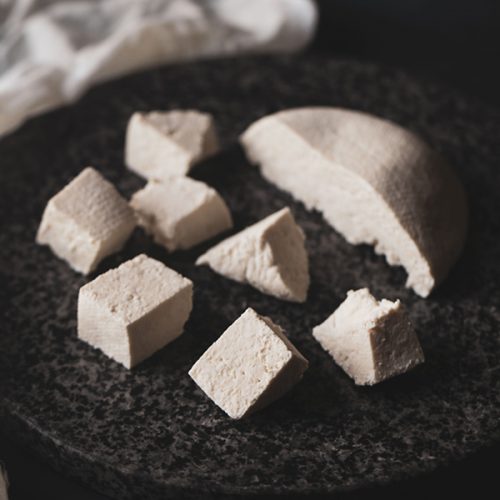
How to make Paneer at home from scratch
Ingredients
Ingredients
- 1 litre full fat whole milk
- 2 to 4 teaspoons lemon juice or vinegar or 3 to 4 tablespoons curd or yogurt
Materials required
- cheese cloth or muslin or a thin cotton napkin
- some bowls and a heavy weight object or plates
Instructions
Boiling milk
- First, rinse a large, heavy duty pot with water. Add milk to the pot.
- Then begin to heat the milk on a medium-low heat.
- Stir occasionally so that the skin does not form on the surface and also so that the milk does not get burnt from the bottom.
- Meanwhile, take a pan or a bowl. Place a strainer on the pan. Line the strainer with clean muslin or cheesecloth or cotton napkin. You can even line the pan directly with the muslin.
Adding food acid
- When the milk starts boiling, add the lemon juice or vinegar. Begin to stir.
- The milk has to curdle completely. Stir the milk when it is curdling so that the curdled milk does not stick to the base of the pan.
- Sometimes you will see the milk has curdled partly but no watery whey can be seen. In this case also add 1 to 2 teaspoons more of the food acid and stir again. You should see the greenish colored whey in the milk.
- After the milk has curdled completely and you see the greenish whey, switch off the heat and then immediately pour the entire mixture in the strainer lined with the muslin, cheesecloth or cotton napkin.
- Carefully gather the edges of the muslin as the coagulated milk mixture will be very hot. While doing this more of the whey will be strained.
- Run some clean fresh water on the gathered muslin all over.
Making paneer
- With the ends tightly gathered, run clean, fresh water all over the cloth to rinse.
- Keep a heavy weight on top of the muslin or cheesecloth for 30 to 40 minutes. Use a heavy object having 500 to 600 grams weight. You can even hang the muslin bundle for an hour on your kitchen basin faucet if not using a heavyweight object.
- Some more whey will be strained when you place the heavyweight object. So remove the whey from the plate.
- After 30 to 40 minutes the paneer will set.
- Once warm or cooled cut homemade paneer into cubes or any shape.
- You can also refrigerate the paneer. Keep it in an air tight container or immerse the paneer block in a bowl of water and keep in the fridge.
- Homemade paneer stays fresh for 2 to 3 days in the fridge in an air-tight container. You can slice the paneer cheese later and use it any recipe.
Video
Notes
- Milk: First and foremost use good quality milk. Again full fat whole milk yields excellent results just like it does for making homemade curd. You can use both raw milk or homogenized milk.
- Food acids: Three ingredients that coagulate the milk. You can use any one of them: Lemon juice, curd or vinegar. Each of these will add a faint hint to the paneer you make. Remember this. If you don’t like lemony or vinegar taste, add curd (yogurt) or buttermilk instead.
- Cream: If there is plenty of cream floating on top of milk surface, then there is no need to remove it. The natural cream present in the milk, makes the paneer cheese soft.
- Curdling milk: When you add the lemon juice or vinegar the milk will begin to curdle. The milk has to completely curdle. You should be able to see the whitish or greenish whey. When the milk has curdled completely then do not simmer or cook it further. Remove immediately and strain the milk. This overcooking will yield a hard paneer when it is set.
- Storing: Refrigerate paneer in an air-tight container for 2 to 3 days. Another way to keep the homemade paneer soft in the fridge is to soak the paneer block in water in a bowl and keep in the fridge. This way the paneer does not become hard. Alternatively you can soak the paneer in warm water after you have removed it from the fridge.
- Scaling: You could easily make a large block of paneer by doubling or tripling this recipe. When the paneer is set, chop them in cubes. Place them in an air-tight box and freeze. You can even refrigerate the paneer cheese for 2 to 3 days.
Nutrition Info (Approximate Values)
This homemade paneer recipe post from the archives first published in May 2012 has been updated and republished on November 2020.
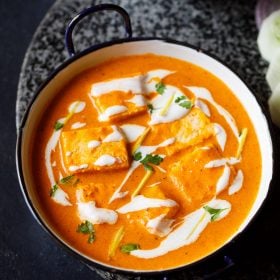
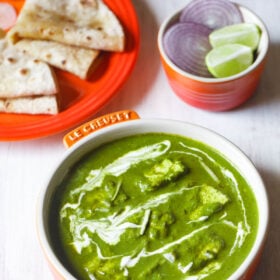
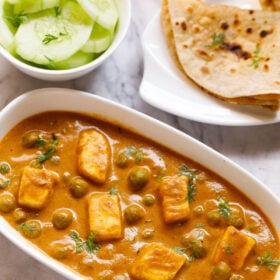
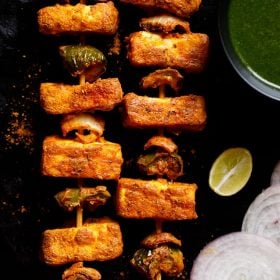

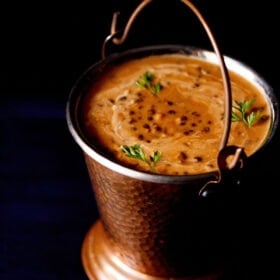
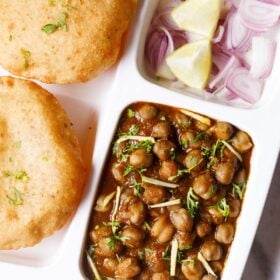








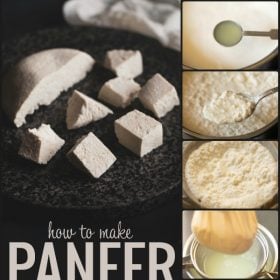
What can we do with the whey we get after preparing paneer?
Heard the whey is very nutritious. How long can the whey be preserved.
kavitha, you can use the whey in making chapatis, parathas, dals, gravies and even pulaos & biryanis. generally i add it to chapatis or gravies. i keep in the fridge for 2 to 3 days only. just note that there will be a slight sour taste in any dish that you add the whey. it is due to the lemon juice/curd/vinegar added while making the paneer. so you can easily use in recipes where a faint sour taste is there, eg biryanis or some sour gravies or curries.
Hello Mrs.amit
May I know what is the difference between chenna and paneer? 🙂
on the face both look same. but are not. chenna is the coagulated milk and paneer is the coagulated milk which has been set firmly. chenna is more moist than paneer.
I am from the Cayman Ishands ant find paneer at all, so I made my very own. It turned out great. Thank you for your help
welcome and thankyou sharon 🙂
How long should it take for the milk to curdle?
if the right amount of lemon juice is added, it just takes a few seconds to curdle.
Hi I am from Pakistan.thanks for your recipes.they make my work easy and tasty.
glad to know this afsheen and thankyou 🙂
I used your recipe last night and I admit that it was SO EASY and SO GOOD that I’m amazed. Thank you for posting. I did use regular whole milk but I did have to have a tablespoon of vinegar, a bit more than you recommended. Turned out beautifully and super tasty. I’ll be making this all the time now because I love paneer and since I’m vegetarian this is a much better option that having tofu in recipes. Too much soy is not a good thing.
thanks for the positive feedback, beth. making paneer is very easy. yes sometimes the proportion of acidic agents like lemon juice o vinegar can be less or more depending on the quality of milk.
I made paneer from cows milk. Its has come out really very good. And I used it for paneer tikka. I was lil worried as to whether it will hold the scewer or not but it was firm enough to hold.
Thanks for sharing.
welcome rachna. nice to know this. thanks for sharing your experience.
I just made this paneer and it turned out excellent as do all of your dishes. I did add a bit of extra lemon juice to get all of the milk to curdle. I left mine to sit about 2 or 3 hours to help it fully drain.
My husband is from India and I am American, and your blog is my go-to place when I am trying to learn a recipe he loves. My mother-in-law and sister-in-law are always so shocked that I can make things like khandvi or paneer, but I really owe all my success to your blog!
thank you very much liz. i can imagine your mom in law and sis in law wondering how you manage and whats the secret. keep them guessing 😉
I never thought that it was this easy to make your own paneer cheese! Thank you so much Dassana, for the recipe and the step-by-step methods. I will be making this asap, I can’t wait to try your delish paneer recipes. 🙂
welcome saya. glad to know this.
Hi! just wanted to know whether it is possible to store the whey in the fridge to use it later??
amuda, it will stay good for 1-2 days only in the fridge.
Found it, thanks!!! I can’t get paneer here, so I’ll try to makee it by myself for the recipes from your site 🙂 .
welcome sari
OH! ..and the whey, I have been using it in broths and smoothies. What an amazing pure protein. LOVE IT!
I was so pleased with this. It was the first time I made paneer. I used raw milk (I always drink it too even though govt has demonized it) and apple cider vinegar. I made it for vegetable biryani and it came out perfect. I did pick up on the vinegar in the taste but not after it was in my dish. I think I may try the lemon next time. It was quite easy to make and was perfect in my dish. Thank you 🙂
welcome denise. glad to know this. just rinse the hot curdled milk solids with water and after taste of vinegar or lemon will go away.
Thank you so much for such wonderful recipe, followed your recipe step by step you made it look so easy to make. It turned out great ended up using it in matar paneer. Recipe is totally a keeper. Stay blessed ♥
welcome Kuku. thanks for your positive feedback and blessings.
Thanks a lot for the recipe/process. Of course it took repeated additions of lemon juice (total 1 medium size lemon for 1.5 lt) for it to work. But the result was fresh, soft homemade paneer plus bonus whey! Now I’ll always make it at home.
One query tho, the paneer had a distinct tho mild flavour of lemon, is that to be expected? Any way to avoid it?
welcome pradha. after you add the paneer in the muslin, the squeeze the whey carefully and rinse the muslin under a tap of running water. this will remove the mild lemon flavor. homemade paneer is always best.